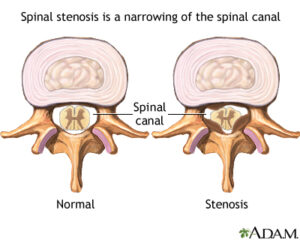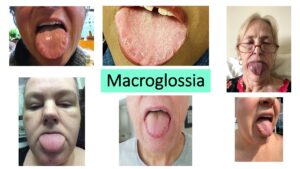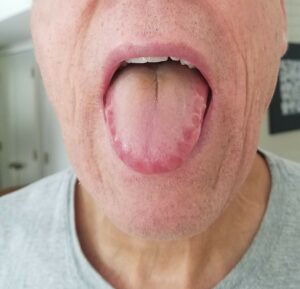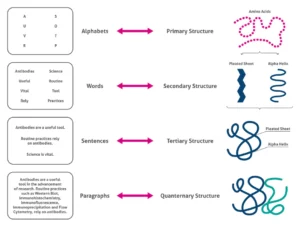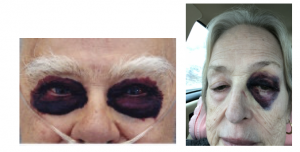
What a year it has been for everyone! Year-end 2020 brings us nearly two years since launch, and includes one and a half school years (or three semesters) of medical school. During that time we have established our mission, pivoted from in-person to virtual thanks to COVID-19, achieved 92% of our presentation goal for 2020, and are excited for 2021!
Our mission is to educate future doctors about amyloidosis, with the belief that heightened awareness will lead to earlier diagnosis and ultimately improve patient survivorship. We know that the level of medical school education about amyloidosis runs the gamut, from a small mention in textbooks to classroom discussions with medical professionals, although the bias is overwhelmingly towards the “minor mention.” As a result, we are confident our efforts will provide students with a valuable enriched exposure to this disease to augment the medical school curriculum.
EXECUTIVE SUMMARY
- Last year, we set our 2020 goal at 60 presentations, not knowing what was ahead. We gave 22 presentations in the Spring, and 33 presentations this Fall. So while we didn’t quite reach our goal, we are super proud that we did achieve 92% of our goal! Go us!
- We are thrilled that our activities are expanding – not only are we returning to medical schools we presented to last year, but we are adding new schools to the roster. A long way to go, but still positive direction. A full list can be found at the end of this update.
- Our agility in shifting last Spring to a virtual platform served us well. This rapid shift minimized the impact to our operations and, as a result, we were suspended for only a few months. By April, operations had resumed on a minimal basis. By August, operations were back to full swing, with everything being virtual since then.
- We average around 45 speakers, which allows for diversity in our speaker population’s disease state and flexibility in their availability. This has served us well.
- Our additional resources to develop speakers, their presentation styles, their stories, and their virtual audio/video capabilities has been well-received and we believe is translating to a higher quality offering.
- We are particularly delighted that our medical school student mailing list – those interested post-presentation in continuing to receive information about amyloidosis – keeps growing and we will be at 100 in the near future! Content is pulled from experts and other trusted organizations with the intention to offer brief insights into the disease.
- This year, with the help of one of our speakers who is a professor/Ph.D. in social science, we will be investigating how we can better ascertain and improve our speaker/ASB effectiveness in the eyes of the medical students.
- Each Spring and Fall we reach out to medical school deans, updating them on our activities.
THE 2020 NUMBERS
- We reached out to nearly all 160 continental U.S.-based medical schools and student interest groups, met with varying degrees of interest (or no response and/or no interest in some cases).
- We made 55 presentations in 2020, and have 10 already booked for Spring 2021. Since the ASB started, we now have 89 presentations logged. A complete list of schools we have presented to since we began can be found at the end of this email.
- Roughly 20% of the presentations are within the curriculum; 80% are to student interest groups. Identifying the appropriate professor(s) and establishing a dialogue continues to be a big challenge.
- Our educational materials, per the organizers, reached over 16,400 medical students, pushing us over 25,000 since we began.
SPEAKERS
The cornerstone of our effort is our group of wonderful patient speakers, who passionately volunteer their time to give back and share their stories of life with amyloidosis.
On average, we have around 45 active speakers, diversified by geography across the continental U.S., by amyloidosis type, by organ involvement, by gender and age. This is a rather deep bench, but we have found it both helpful and necessary. Helpful in that we can maximize attendance if we work around the preferred dates and times suggested by the schools. Helpful in that we can match specific disease states with audience focus (e.g., a cardiac amyloidosis patient speaker to a cardiology student interest group). Necessary in that periodically, a speaker’s personal situation may change and they need to step back either temporarily, or permanently. We are fortunate to have a steady pipeline of new speaker interest, which we spend time screening, qualifying and training. At present, we feel this is an appropriate number of speakers for our current and anticipated growth.
One area we have added resources to is training and presentation development for our speakers. Thanks to one of our speaker volunteers who has extensive experience, we offer in-depth guidance for new speakers in the development of their presentation outline and rehearsal training for their delivery. In addition, prior to every virtual presentation we rehearse and test the speakers’ audio and video technology. For those partaking, it has been an appreciated additional level of support and we believe is translating to a higher quality offering.
We are saddened that one of our speakers, Mark Stinehour, succumbed to this disease at the age of 56. He was passionate about giving back and leaving a lasting legacy to make a difference for those to come. Our hearts and prayers go out to Mark’s family.
ADVISORS
We are proud to have an impressive group of medical experts and influencers in the world of amyloidosis, some of whom are also patients, as advisors to support our initiative. Our advisors are active in our efforts and contribute their specialized expertise in a variety of ways, such as medical school introductions, grant requests, educational development, and patient speaker assessment/development. We are extremely grateful for their assistance and believe that, thanks to their contribution, the ASB will make an even bigger difference in the diagnoses of this disease. You can see our prestigious list of advisors on our website page www.mm713.org/speakers-bureau/
We are sad to share that one of our advisors, Dr. Janice Wiesman, passed away from COVID-19. Janice was an ardent and active supporter of our efforts and passionate about the world in which she lived. Our hearts and prayers go out to Janice’s family.
TESTIMONIALS – OUR TRUE REPORT CARD
Feedback from students and medical school professors has been extraordinarily positive. It reinforces to us that candid and authentic patient stories are a valuable complement to the medical school curriculum, strengthening the learning and deepening the durability for these future doctors about this disease. This is exactly why we do what we do. Here are just a few of the testimonials from this year.
The opportunity for second year medical students to hear the story of a patient with amyloid is invaluable. The presentation addressed aspects of pathophysiology they are learning and the human side of medicine. This presentation format offered an excellent teaching opportunity to inform doctors-in-training about this serious disease. Our students gained insight into the patient’s journey through diagnosis, treatment and the challenges ahead. We all appreciated the patient’s generosity in sharing her experiences. Having patients teaching medical students about amyloidosis will have a lasting impact on our future doctors with increasing awareness of this disease and ultimately will help future patients. Theresa Kristopaitis, M.D., Professor, Assistant Dean for Curriculum Integration, Loyola University Stritch School of Medicine
Such a powerful presentation that I will carry with me throughout my whole career, no matter what specialty I go into! I not only learned the importance of keeping amyloidosis on my differential, but also the importance of really listening to your patients and working through the hard diagnoses together. Solana Archuleta, MD Candidate, University of Colorado School of Medicine
I had several students make comments after the conclusion of the presentation that it was the best, one even said ‘exceptional,’ presentations given at our school from a patient. The materials gave all of the students, including myself, a great introduction to some of the pertinent findings in patients with amyloidosis. Co-President of the Internal Medicine Interest Group, University of Arizona College of Medicine, Phoenix
Hearing Ed talking about his journey with Amyloidosis was an incredible experience that only further inspired me to want to be a better physician for my future patients. It is one thing to learn about a condition in the classroom, but hearing the real-world struggles with it from another human being provides a whole new perspective. Ed was open about his journey and shared his feelings during each step, giving us insight into what it is like to be a patient with Amyloidosis. I will take what I learned from this presentation and apply it in order to ensure that patients I see in the future do not have to deal with the same issues that Ed had to deal with. Gurkaran Singh, MD Candidate, University of Arizona College of Medicine, Tucson
Diseases such as amyloidosis are often managed by specialists, but it is important for primary care physicians to recognize these signs and direct these patients to these specialists. Increasing awareness of these diseases among all physicians will help patients reach an answer sooner and can have a significant impact on their lives. Yue Zhang, MD Candidate, Northwestern Feinberg School of Medicine
Looking ahead to 2021 we again will target 60 presentations, and seek to expand the list of schools we present to. We are pleased with all we have accomplished thus far, energized by the feedback, cognizant that we have much ahead, and hope we have made you proud. As always, we welcome any comments you may have.
Stay safe, happy holidays, and all the best for a new 2021!
Mackenzie, Charolotte, and Deb
Operating Committee of the Amyloidosis Speakers Bureau, sponsored by Mackenzie’s Mission
————————–
Since inception in 2019, the Amyloidosis Speakers Bureau has presented to medical students of the following medical schools.
California University of Science & Medicine, School of Medicine, San Bernardino
Central Michigan University College of Medicine
Chicago Medical School, Rosalind Franklin University of Medicine and Science
Cleveland Clinic Lerner College of Medicine
Columbia University Vagelos College of Physicians and Surgeons
Drexel University College of Medicine
Florida Atlantic University Charles E. Schmidt College of Medicine
Florida International University Herbert Wertheim School of Medicine
Florida State University College of Medicine
Geisinger Commonwealth School of Medicine
George Washington School of Medicine
Icahn School of Medicine at Mt. Sinai
Lewis Katz School of Medicine at Temple University
Loyola University Chicago Stritch School of Medicine
Mayo Clinic Alix School of Medicine, Rochester
Mayo Clinic Alix School of Medicine, Scottsdale
Northeast Ohio Medical University College of Medicine
Northwestern University Feinberg School of Medicine
NYU Grossman School of Medicine
Oakland University William Beaumont School of Medicine
Quinnipiac University Frank H Netter MD School of Medicine
Stanford University School of Medicine
Tufts University School of Medicine
University of Arizona College of Medicine, Phoenix
University of Arizona College of Medicine, Tucson
University of Chicago Pritzker School of Medicine
University of Colorado School of Medicine
University of Connecticut School of Medicine
University of Florida College of Medicine
University of Illinois College of Medicine, Chicago
University of Illinois College of Medicine, Peoria
University of Illinois College of Medicine, Rockford
University of Iowa Carver College of Medicine
University of Kansas School of Medicine, Wichita
University of Maryland School of Medicine
University of Massachusetts Medical School
University of Minnesota Medical School
University of Missouri Kansas City School of Medicine
University of Nevada Reno, School of Medicine
University of Pittsburgh School of Medicine
University of South Alabama College of Medicine
University of South Carolina School of Medicine, Columbia
University of Toledo College of Medicine
UNLV School of Medicine
Virginia Commonwealth University School of Medicine
Wayne State University School of Medicine
Wright State University Boonshoft School of Medicine
Yale School of Medicine
